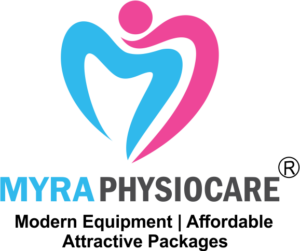Rotatorcuff Tear
A rotator cuff tear is a common injury to one or more of the muscles and tendons that make up the rotator cuff in the shoulder joint. The rotator cuff is a group of muscles and tendons that attach the upper arm bone to the shoulder blade, providing stability and allowing for a range of shoulder movements.
Partial-thickness tear: This type of tear involves damage to only a portion of the rotator cuff tendon, and may not completely sever the tendon.
Full-thickness tear: This type of tear involves a complete severing of the rotator cuff tendon, and may require surgical repair.
Acute tear: This type of tear occurs suddenly, often as the result of a traumatic injury such as a fall or impact.
some exmple Rotatorcuff Tear
Chronic tear: This type of tear develops gradually over time, often as the result of repetitive overhead activities or degenerative changes in the rotator cuff tendon.
Supraspinatus tear: This type of tear specifically involves damage to the supraspinatus tendon, which is one of the four tendons that make up the rotator cuff.
Infraspinatus tear: This type of tear specifically involves damage to the infraspinatus tendon, another one of the four tendons that make up the rotator cuff.
These are just a few examples of the different types of rotator cuff tears that can occur. It’s important to receive an accurate diagnosis and appropriate treatment for any type of rotator cuff tear, as early intervention can help to prevent further damage and improve shoulder function.
- Rotator cuff tears can occur due to acute trauma, such as a fall or injury, or chronic wear and tear from repetitive overhead activities or aging. Symptoms may include pain, weakness, limited mobility, and a clicking or popping sensation in the shoulder.
- Treatment options for a rotator cuff tear may depend on the severity of the injury, the age and activity level of the patient, and the location of the tear. Conservative treatments such as rest, ice, and physical therapy may be recommended initially to help reduce pain and inflammation and improve shoulder function.
- In cases where conservative treatments are not effective, or the tear is severe, surgical intervention may be necessary to repair or reattach the damaged tendon. During surgery, the surgeon may use arthroscopic techniques, which involve making small incisions and using tiny instruments and a camera to repair the tear.
- Rehabilitation and physical therapy are usually necessary after surgery to restore strength, flexibility, and function to the shoulder. It’s important to follow a specific rehabilitation program prescribed by a healthcare professional to ensure a safe and successful recovery.
- Prevention measures such as proper form during exercise and using proper equipment can also help reduce the risk of developing a rotator cuff tear. Additionally, addressing any underlying conditions or imbalances that may contribute to the development of a rotator cuff tear, such as muscle weakness or poor posture, can also help prevent future injuries.
- Some common risk factors for rotator cuff tears include age, as the tendons in the rotator cuff can weaken and become less flexible over time, as well as participation in sports or activities that involve repetitive overhead motions or sudden impact, such as baseball, tennis, or weightlifting.
- If you are experiencing symptoms of a rotator cuff tear, it’s important to seek medical attention from a healthcare professional, such as an orthopedic specialist, who can properly diagnose the condition and recommend appropriate treatment.
- In addition to medical treatment, lifestyle modifications such as maintaining a healthy weight, incorporating low-impact exercises, and engaging in activities that promote shoulder joint health and flexibility can help prevent future injuries and improve overall joint function.
Overall, rotator cuff tears can be a painful and limiting condition that can significantly impact a person’s quality of life. However, with proper diagnosis and treatment, most individuals can successfully manage their symptoms and return to their daily activities with improved shoulder function and reduced pain.
